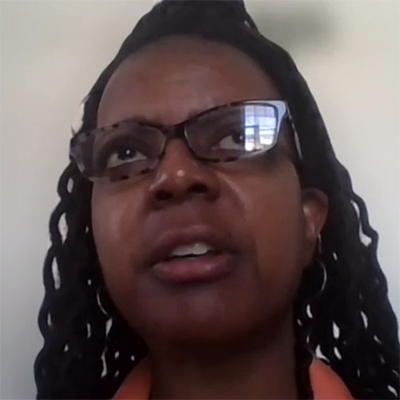
The flood of federal dollars authorized by the passage of the Infrastructure Investment and Jobs Act is expected to accelerate clean energy projects, enable utilities to build out infrastructure and sharpen state competition for economic development.
The enormous possibilities have not been lost on the Missouri Energy Initiative, a 12-year-old think tank with a mission to accelerate development in the Show Me State.
MEI’s annual two-day economic development meeting, conducted virtually Dec. 8-9, examined the role utilities played in two economic development projects in the service areas of two Missouri utilities, Ameren Illinois and Evergy.
During the session, MEI unveiled a new report on the extent of electric vehicle charging infrastructure in Missouri, launching an in-depth panel discussion about the pitfalls and expenses of a mass EV charging buildout and what that will mean for the state.
MEI also invited the head of supply chain at Swift Prepared Foods to discuss the company’s expansion and the role played by utilities in site selection that kept the expansion in-state.
Swift Foods, owned by Colorado-based JBS USA Holdings, has 60 meat processing plants in 28 states. More expansion is expected.
In a separate panel, a development director with Evergy discussed how the state landed an 800,000 square-foot logistics center built by Chewy, a pet food company. The project will ultimately employ more than 1,600.
The conference also looked at a new cobalt mining operation in the state, built on the remains of a retired lead mine that had been declared a Superfund Site by the U.S. Environmental Protection Agency. Opened in the 1840s, the mine has sat dormant since the 1980s.
Most of the cobalt used in storage batteries is mined in Africa and processed in China. Missouri Cobalt aims to supply North American battery builders, said John Diehl, Jr., the company’s general counsel. He said the company is planning to open a hydrometallurgical plant in 2022 to produce battery-grade cobalt sulfate.
Virtual attendees also got updates on the state’s efforts to identify a consensus on a new state energy development plan and a few details on the expected rollout of funding that will be made available by the passage of the bipartisan federal infrastructure bill, which President Biden signed into law on Nov. 15. (See Biden Signs $2 Trillion Infrastructure Bill.)
Utilities Play Crucial Role
JBS USA earlier this year committed to reduce its greenhouse gas emissions 30% by 2030 and 70% by 2040, with the ultimate goal of net-zero emissions.
 Joe Machetta, Swift Prepared Foods | Missouri Energy Initiative
Joe Machetta, Swift Prepared Foods | Missouri Energy Initiative
“It’s really more about building in the energy efficiency, whether it be lighting or [using] clean energy,” said Joe Machetta, head of integrated supply chain for Swift Foods.
The company wanted to build a new bacon plant and started its search for a site with a list of over 90 locations, Machetta said. But electricity was a key issue.
“One of the key things for us was obviously the utilities,” he said. The company decided to build the $68 million plant in Moberly, Mo., creating about 200 new jobs.
“The [economic development incentive] offered by Ameren was clearly critical, and it really pushed Moberly over the edge,” he said, referring to a 40% rate discount the utility was able to offer the company for five years.
“The utility spend this year will be close to a million dollars. Next year it will be north of $2.6 million just in utilities for keeping the lights on and operating the process,” Machetta said.
Chewy’s new logistics and e-commerce fulfillment center that opened this year in Belton, Mo., is another success story for the state in which another utility, Evergy, played a key role.
 Lisa Franklin, Evergy | Missouri Energy Initiative
Lisa Franklin, Evergy | Missouri Energy Initiative
Lisa Franklin, lead economic development manager at Evergy, said the community reached out to the utility because it had not had much luck attracting new development.
“Our energy economic development team — along with the city — conducted a competitive analysis to determine what they needed to position themselves to be competitive globally.
“I think this may be where we’re a little bit different in energy. It’s like putting your house on the market. You know you have some major issues that need to be resolved before you can successfully sell it,” she said.
“We went through an actively competitive assessment. We performed a site identification study. That was us going out and helping them locate a site where an industry would actually want to locate. This happened to be on a major interstate. After that was done, we went through a site due diligence analysis, and that was a research project that allowed us to look at all of the infrastructure needs, whether it was electric, gas, water, sewer,” Franklin said.
Chewy chose Belton over cities in other states and opened the fulfillment center last summer, which is expected to develop a workforce of up to 1,600 employees.
Franklin said the development team is now working on two other projects, each expected to draw 250 MW of demand.
“These are very, very large projects. Ten years ago, we would never see anything that large, but today it’s like everything that’s coming to the door happens to be a very large project. That’s becoming a big issue for us because we’re having to build up infrastructure to meet those demands.”
Job Training Is Key
Job training has become another critical ingredient in economic development as technology has transformed manufacturing. And since the pandemic began, an unexpected new phenomenon has only added to the problem: the “Great Resignation.”
 Rosa Schmidt, Center for Energy Workforce Development | Missouri Energy Initiative
Rosa Schmidt, Center for Energy Workforce Development | Missouri Energy Initiative
“I still remember the time when we were in the single digits, and people would start with our companies and leave from our companies,” said webinar participant Rosa Schmidt, an analyst with the Center for Energy Workforce Development, a nonprofit consortium of nearly 120 utilities. The center’s mission is to take the pulse of the industry’s workforce and issue comprehensive biennial reports
The latest analysis reveals that “64% of folks leave within the first five years. Think about the impact on the industry when you have almost 65% of the population that you hire, spend time and energy to educate and train, and within the first five years they’re walking out the door. This is a major issue for our employers.”
More disturbing, she said is that 19% of people with more than 10 years of service are also leaving their jobs. Almost half of those are … over the age of 53, and 43% are between the ages of 38 and 52. It’s the Great Resignation.”
Added to that problem is that technologies are changing, making it difficult for utilities as well as technical schools and unions to prepare for the future, especially one that will be decarbonized.
 Ben Berhorst, Missouri Technical College | Missouri Energy Initiative
Ben Berhorst, Missouri Technical College | Missouri Energy Initiative
The center has been working with several consulting firms in an effort to figure out what job skills utility workers will need in 2035, Schmidt said.
“A lot of our [corporate] members are really struggling with technology because of the way that things are changing. The center is working to develop a ‘competency model’ for future workers.
“We don’t know what that’s going to look like, what knowledge and skills they will need. And so we are going to be working on developing some tools and resources and an assessment for workers of the future,” she said.
Ben Berhorst, dean of the Division of Technology at the State Technical College of Missouri, said the staff there is also trying to develop an energy technology program to account for power plant technology moving from fossil generation to renewable technologies.
 Nicole Fondren, Spire | Missouri Energy Initiative
Nicole Fondren, Spire | Missouri Energy Initiative
Nicole Fondren, manager of talent acquisition and workforce development at gas utility Spire, pointed out that people today already deal with technologies in everyday life as well as on the job.
“We have a lot of technology that the field [employee] has to use, whether it’s drones or whether it’s utilizing a computer system in the [work] truck. … It’s a learning curve. It’s a change that management has had to face, with individuals who never had to use technology before but are now having to use it,” she said.
Missouri along with the rest of the nation is on the cusp of one of the most significant changes in decades: the electrification of everything from industry to residential to transportation. That also is expected to increase demand for new and comprehensive job training to build out the necessary infrastructure.
EV Charging Stations the Catalyst
EV charging stations are more common in Missouri’s metropolitan areas, but given the predictions of EV growth, that will have to change.
 Travis Wood, Missouri Energy Initiative | Missouri Energy Initiative
Travis Wood, Missouri Energy Initiative | Missouri Energy Initiative“EV market share is around 2% now,” said Travis Wood, MEI’s program manager and author of the survey and analysis of EV growth in the state. That share is expected to rise to 10% by 2030 and 58% by the 2040s.
“We can expect relatively explosive growth of the industry compared to what we’ve seen up to this point. Coupled with that growth is the need for charging infrastructure and specifically public charging infrastructure.
“While it is the case that 80% of charging occurs in the home, at least currently, public charging infrastructure is needed to facilitate these longer trips, to top off during shorter trips, to reduce that range anxiety and increase the visibility of EVs and help the industry grow,” Wood said.
“If we look nationally, the U.S. has around 44,000 charging stations, but an estimated 1.25 million are going to be needed by 2030,” he said. “So there’s a lot of growth that is coming for this industry in a relatively short amount of time.”
Missouri has about 9,000 registered light-duty EVs and over 2,000 public charging stations, he said, but only 215 fast chargers — able to refill an EV’s batteries to at least 80% capacity in approximately 20 to 30 minutes. The rest of the public chargers are Level 2 chargers, running on 240 V, and require more time to charge an EV. Many residential Level 1 chargers run on 120 V and are typically used overnight.
“It can be argued that Missouri has sufficient charging ports in place now to meet current EV adoption levels,” Wood said. “But you know, looking out to 2030, it’s estimated there’s going to be over 200,000 EVs on the road in Missouri. So, there’s going to be the need for 8,000-plus public charging ports, at least according to DOE, to support that growing market.”
The buildout of EV charging infrastructure will test not only the utilities but also private electrical contractors who will be asked to bid for private construction of charging stations.
Using the rise of EVs as a starting point, a separate panel looked at the potential impacts on the ability of the state’s utilities to meet new demand while maintaining a stable delivery system and avoiding steep price increases.
 Linda Little, St. Louis Electrical Training Center | Missouri Energy Initiative
Linda Little, St. Louis Electrical Training Center | Missouri Energy Initiative
“I think that Missouri could try to lead in a couple of things. One is coming up with an energy storage solution. So then as we have more and more of these charging stations — even the quick charging stations that are going to need this energy — that we have the energy storage capability to back those up,” said Linda Little, assistant director of the IBEW/NECA Electrical Industrial Center in St. Louis.
Patrick Justis, manager of efficient electrification development for Ameren Missouri, said building home charging stations will be “a big, big issue” in multifamily homes, whether high end condominiums or multicomplex apartment buildings.
“When you’re talking about a 150-car parking garage or parking lot, you’re talking about quite a bit of power,” he said.
“One of the principles we have with utilities is a meter for each domicile. And now you’ve got these vehicles taking up quite a bit of energy and you can’t pull them through your existing meter. Finding technical solutions to this will be really important.”
Panel moderator Maurice Muia, principal of a consulting company and climate adviser to the Natural Resources Defense Council and the city of St. Louis, summed up the future this way:
“I think innovation and workforce development are going to play a key role. We have very good institutions of higher learning. We have a ton of electrical contractors across the state.
“We have what we need to be great in this clean energy economy of the future. We have all the necessary parts and puzzles. It’s a matter of, as everyone has said, how do we prioritize and come up with a vision and mission that meets the needs of the residents and those that visit Missouri as well.”
